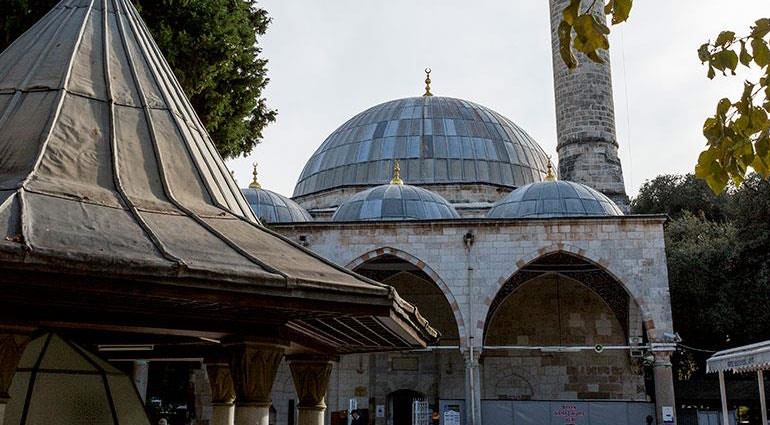
Recorded in the inscription over its entrance is that this mosque was built by Murat Paşa in 1570. It is outside the fortification walls to the north of Kaleiçi, in the Murat Paşa Neighborhood, to which it gave its name. It is surrounded by quite a large garden in which there are centuries-old plane trees. The minaret with two balconies in the southwest corner is not original, it was added at the beginning of the 20th century. White marble was used for the door frames and window frames of the building that was completely constructed from stone blocks.
The building consists of a place for the latecomers to prayers, with three-domes spread along the north facade and a square-like prayer room covered by a single dome.
The place for the latecomers to prayers has a three-arched facade supported mainly supported by reused columns and capitals and built of alternately colored stone. The interior surfaces of the domes supported by arches resting on half columns on its facade display hand-painted decoration re-colored in recent times.
All facades of this place of prayer that have two windows that have a pediment with a pointed arch over a tetragonal opening below and two adjacent windows with pointed arches facing intermediate levels of these windows above and one rose window above them.
There is one prayer niche-mihrab on either side of the windows of the place for the latecomers to prayers when entered the building through the door in the center of it and another door to access the minaret in a point close to the northwest corner. The building inscription is over the entrance over the flattened arch enclosed by cornices.
The main prayer room is covered by a single dome resting upon an octagon drum. The lower part of the dome and adjoining transitional areas are decorated with hand-painted floral decoration as in the domes over the place for the latecomers to prayers in recent times. Tiled pointed arched pediments are over the interior windows on the east, west and south walls.
The mihrab in the center of the south wall and mimbar to its right were built from marble like the door frame of the entrance.